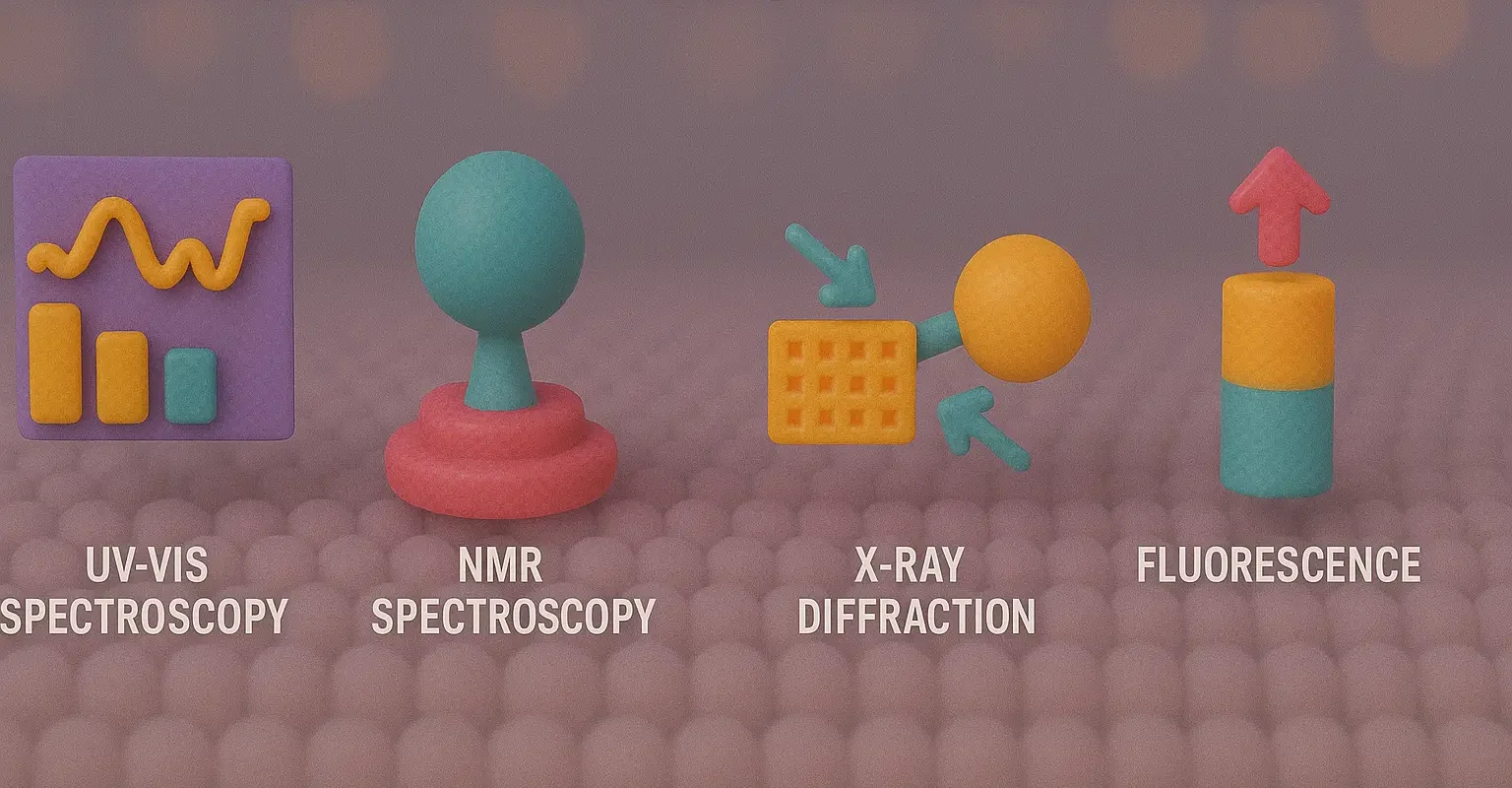- Methods of Analysis for Complexes analysis explores the formation, stoichiometry, and stability of complexes between a central atom (typically a metal ion) and ligands.
- This understanding is essential in fields like chemistry, pharmacology, and materials science.
- Below are four primary methods used to analyze complexation:

1. Method of Continuous Variation (Job’s Method)
-
Overview:
- Job’s Method determines the stoichiometry of a complex by varying the mole fractions of the central atom and ligand while keeping their total concentration constant.
-
Procedure:
- Constant Total Concentration: Maintain a fixed total concentration of central atom and ligand.
- Varying Mole Fractions: Systematically change the mole fraction of each component.
- Measure Physical Property: Record a property like absorbance or conductivity at each mole fraction.
-
Determining Stoichiometry:
- Plot Property vs. Mole Fraction: Identify the maximum point on the plot.
- Stoichiometric Ratio: The mole fraction at the maximum indicates the complex’s stoichiometry (e.g., 1:1).
-
Applications:
- Widely used in coordination chemistry to establish metal-to-ligand ratios in complexes.
2. Distribution Method (Partition Method)
-
Overview:
-
Procedure:
- Two-Phase System: Set up immiscible solvent layers.
- Form Complexes: Introduce central atom and ligand to allow complex formation.
- Measure Concentrations: Determine the complex concentration in each solvent phase.
-
Determining Stability and Stoichiometry:
- Partition Coefficient (K): Ratio of complex concentrations in the two solvents.
- Analyze Data: Vary ligand concentrations to calculate stability constants and stoichiometry.
-
Applications:
- Useful for separating and purifying complexes that prefer different solvents, aiding chemical synthesis and analysis.
Advertisements
3. Solubility Methods of Analysis for Complexes
-
Overview:
- Assesses how ligand presence affects the solubility of a poorly soluble compound by forming a complex.
-
Procedure:
- Prepare Solutions: Mix the insoluble compound with varying ligand concentrations.
- Measure Solubility: Use techniques like UV-Vis spectroscopy or chromatography to determine solubility levels.
-
Estimating Stability Constants:
- Solubility Enhancement: Increased solubility indicates complex formation.
- Calculate Stability Constant: Plot solubility against ligand concentration and apply equilibrium models.
-
Applications:
- Valuable in pharmaceuticals for studying drug complexation with solubilizing agents to improve bioavailability.
4. pH Titration Methods of Analysis for Complexes
-
Overview:
- Involves adjusting the pH of a solution containing the central atom and ligand to study complex formation.
-
Procedure:
- Prepare Solution: Mix known concentrations of central atom and ligand.
- Titrate with Acid/Base: Gradually change the pH while stirring.
- Monitor Changes: Track properties like absorbance or conductivity during titration.
-
Determining Stoichiometry and Stability:
- Identify Inflection Points: Points where complex formation or dissociation occurs.
- Analyze Data: Use inflection points to determine stoichiometry and calculate stability constants at various pH levels.
-
Applications:
- Common in biochemical and environmental chemistry to study pH-dependent metal-ligand interactions.

